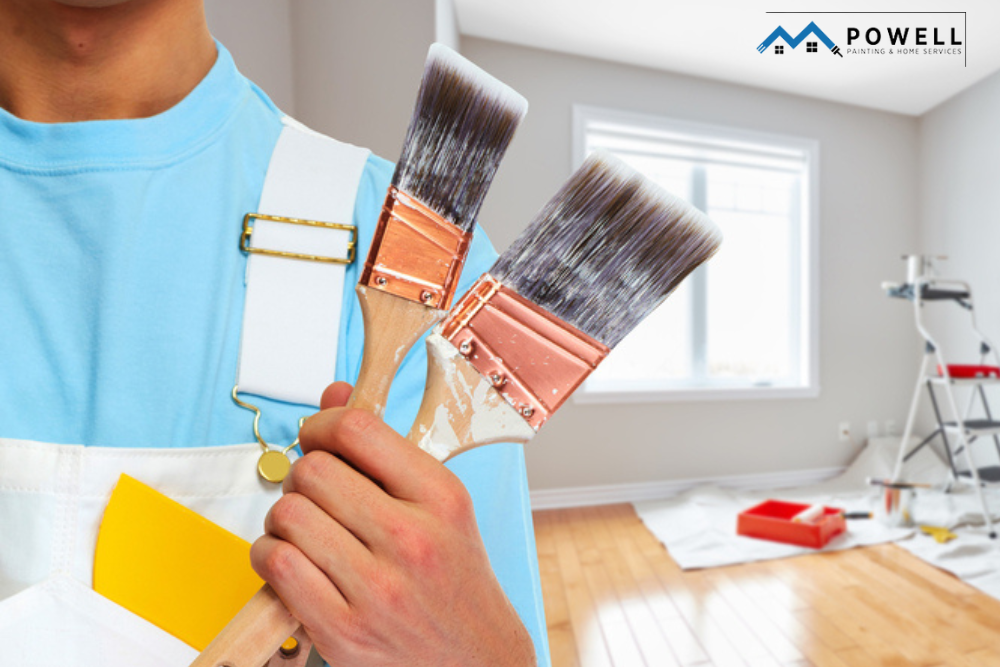Learn How to Select the perfect-match Paint Colors at a paint store corpus christi tx
Discovering the Various Sorts Of Paint: An Overview for every single Task
Checking out the different kinds of paint is important for achieving the wanted result in any task. From water-based alternatives that use benefit to oil-based paints known for their durability, each option has its advantages. Specialty paints can include special textures or coatings, while environment-friendly choices accommodate those seeking sustainability. Recognizing these differences can significantly influence the success of a painting undertaking. What factors should one think about when making the ideal selection?
Recognizing Paint Types: Water-Based vs. Oil-Based
Paint kinds can markedly influence a job's outcome, and recognizing the differences in between oil-based and water-based paints is necessary for informed decision-making. Water-based paints, commonly referred to as latex paints, are composed of water as the key solvent. They dry promptly, release less unstable natural substances (VOCs), and are easy to cleanse up with soap and water. This makes them a preferred option for indoor applications and environments where air high quality is a problem.
On the other hand, oil-based paints utilize natural solvents, providing a resilient, shiny finish ideal for surfaces subjected to tear and wear, such as trim and cupboards. They take longer to dry, call for mineral spirits for cleaning, and have a stronger odor. corpus christi tx paint shop. Choosing between these two types depends upon the certain demands of the task, taking into consideration factors such as desired surface, application setting, and ease of maintenance. Each type has distinct advantages and restrictions, directing the selection process
The Finish Issues: Choosing Between Matte, Satin, and Gloss
When choosing a paint finish, the option between matte and glossy options significantly affects both appearances and functionality. Matte finishes offer a refined, non-reflective appearance that can conceal surface imperfections, while shiny coatings give longevity and convenience of cleansing. Recognizing the benefits and factors to consider of each can assist in making an educated choice for any type of painting task.
Matte Complete Benefits
Although many property owners discuss the benefits of various surfaces, matte paint provides distinctive advantages that make it a popular option for both exterior and interior applications. Among the primary advantages of matte coating is its ability to conceal surface area flaws, developing a smoother appearance on wall surfaces. This high quality is particularly advantageous in older homes or areas with irregular surface areas. In addition, matte paint absorbs light instead of showing it, which can improve the aesthetic of an area by offering a much more innovative and soft appearance. Matte surfaces are often much easier to touch up than glossier options, as they can mix much more effortlessly when applied over existing paint. Generally, matte paint is an excellent option for those looking for a fine-tuned and classy finish.
Shiny End Up Considerations
A shiny finish can substantially alter the understanding of a space, providing a streamlined and reflective top quality that enhances both color vibrancy and light within an area. This finish is typically preferred for high-traffic areas and surfaces like bathroom and kitchens, where toughness and ease of cleaning are crucial. Its reflective nature can highlight imperfections on walls, making appropriate surface area prep work crucial. Glossy paints likewise often tend to reveal fingerprints and smudges a lot more conveniently, demanding regular maintenance. Additionally, lighting plays a substantial duty; in intense environments, a shiny surface may create glare, impacting the total visual. Consequently, careful factor to consider of the specific application and environment is important when choosing a shiny coating for any kind of task.
Specialty Paints: When to Use Textured or Chalk Paint
Specialized paints, such as distinctive and chalk paint, deal distinct aesthetic and practical benefits that can improve various surface areas. Distinctive paint is suitable for producing depth and measurement on wall surfaces, concealing blemishes while including a three-dimensional feel. It is particularly advantageous in high-traffic locations where toughness and visual interest are essential.

Both types of specialty paints can transform rooms, but selecting the ideal one depends upon the desired result and surface area requirements. Textured paint might match bigger areas, while chalk paint can rejuvenate smaller items, showcasing creativity and personal design in any type of task.
Exterior Paints: Protecting Your Surfaces From the Components
Exterior paints are crucial for guarding surface areas against numerous weather. Comprehending their weather condition resistance features, proper surface area preparation requirements, and effective application strategies can considerably improve toughness and performance. This section will certainly detail essential considerations for choose and utilizing exterior paints successfully.
Climate Resistance Features
Weather condition resistance is an important feature of exterior paints, as it identifies how well surface areas can endure the extreme elements of nature. High-quality exterior paints are formulated to stand up to damage from UV rays, dampness, and temperature variations. UV resistance assurances colors remain vivid in time, preventing fading and staining. Dampness resistance safeguards versus mold and mold, which can compromise the honesty of surfaces. In addition, paints with outstanding temperature level resistance can get and expand without splitting, maintaining their protective top qualities. When selecting outside paints, it is vital to think about these climate resistance features, as they add to the long life and resilience of colored surface areas, making certain they remain visually pleasing and useful despite exposure to the aspects.
Surface Area Prep Work Needs
Proper surface area preparation is an essential action in attaining the ideal results with outdoor paints. To ensure suitable attachment and resilience, surface areas should be completely cleaned up, eliminating mold, dust, and oil. This can be achieved utilizing a stress washing machine or a scrub brush with an ideal cleansing option. As soon as cleansed, surface areas should be inspected for any peeling or flaking paint, which have to be scratched away to develop a smooth structure. Fixing any type of holes or cracks is also important, as these can permit dampness seepage. Furthermore, sanding rough areas advertises far better paint bond. Applying a guide suited for exterior use can enhance the paint's efficiency, guaranteeing a lasting coating that withstands the aspects. Appropriate prep work is vital to an effective outdoor painting project.
Application Strategies Tips
While using outdoor paints, it is important to utilize reliable methods that guarantee surface areas are well-protected against the components. Select the right day for paint; low humidity and mild temperature levels enhance bond and drying. Prepping the surface area thoroughly-- cleansing, fining sand, and priming-- makes sure better paint bond and longevity. Utilizing high-grade brushes or rollers can give a smoother surface, while spray painting might cover large locations effectively. Applying paint in slim, also layers avoids runs and drips. It is recommended to adhere to maker guidelines pertaining to drying out times between layers. Confirm correct ventilation during application to assist in drying and decrease exposure to fumes. These methods substantially enhance the longevity and efficiency of exterior paint.
Eco-Friendly Options: Low-VOC and Zero-VOC Paints
As customers become progressively knowledgeable about the environmental effect of their selections, zero-voc and low-voc paints have emerged as prominent options. These paints are created to have fewer unstable natural substances (VOCs), which are chemicals that can vaporize right into the air and add to air contamination and illness. Low-VOC paints usually consist of a minimal amount of VOCs, while zero-VOC paints have negligible levels, making them much safer for both outdoor and indoor use.
The benefits of using zero-voc and low-voc paints extend beyond environmental factors to consider; they additionally boost interior air quality, reducing the risk of respiratory concerns and allergies. Lots of makers now provide a variety of shades and coatings in environmentally friendly choices, making it simpler for consumers to locate appropriate products for their projects. By choosing these paints, people can contribute to a healthier environment while still achieving the visual they prefer in their spaces.
Devices and Methods for a Perfect Application
Achieving a remarkable paint application needs the right tools and strategies, which can greatly boost the result. Choosing the appropriate brush or roller is essential; brushes function well for edges and detailed areas, while rollers cover bigger surface areas efficiently. Using high-grade products assures far better paint distribution and decreases streaks. For ideal outcomes, surface prep work is necessary. This includes cleansing, fining sand, and priming surfaces to advertise adhesion.
Strategy also plays a substantial role. The "W" approach with a roller assists to equally distribute paint, while long, smooth strokes with a brush protect against visible lines. Functioning in sections permits far better control and blending. Furthermore, applying thin coats is more effective to thick layers, reducing the danger of drips and irregular textures. Maintaining click here a wet side throughout application aids achieve seamless modifications in between locations. By combining these tools and methods, one can achieve a expert and refined coating.
Tips for Preserving and Caring for Your Painted Surfaces
Proper maintenance and care of colored surface areas can considerably expand their life-span and preserve their look. Normal cleansing is important; utilizing a soft fabric or sponge with moderate soap and water can eliminate dust and dirt without damaging the paint. It is a good idea to prevent rough cleansers or rubbing pads, as these can scrape the surface area. Furthermore, using a fresh coat of paint every few years can safeguard and revitalize the color against wear.
For outdoor surfaces, inspecting for indicators of peeling off or fading consistently is essential. Without delay resolving any kind of issues avoids further damages. In locations susceptible to wetness, such as bathrooms, using mold-resistant paint and making certain correct ventilation can help preserve the stability of the paint. Using protective finishes can secure against UV rays and stains, making certain that painted surface areas stay appealing and vivid for years to come, eventually improving the overall visual of the space.

Often Asked Concerns
Can I Mix Different Kind Of Paint Together?
Mixing different types of paint is typically not recommended, as it can result in issues like poor adhesion, irregular appearance, or unanticipated chain reaction. It's finest to utilize suitable paints for ideal outcomes and durability.

Just how Do I Correctly Shop Surplus Paint?
To correctly save remaining paint, secure the container snugly, label it with the date and shade, and maintain it in a trendy, completely dry location away from straight sunlight and extreme temperature levels for optimal conservation.
What Is the Best Method to Take Care Of Unused Paint?
The very best method to get rid of extra paint is to examine local policies, as lots of locations have actually marked contaminated materials facilities. Think about contributing functional paint to neighborhood organizations or institutions for their jobs.
Just How Can I Inform if Paint Is Still Great to Utilize?
To figure out if paint is still excellent, analyze its scent, uniformity, and color. If it shows up separated, has an unpleasant odor, or reveals substantial adjustments in structure, it's likely no more usable.
Exist Age Restrictions for Purchasing Paint Products?
In many areas, there are no certain age limitations for purchasing paint items. Nonetheless, some stores may call for clients to be at the very least 18 years old, specifically for items including solvents or hazardous products.
Paint types can markedly influence a job's outcome, and recognizing the differences in between water-based and oil-based paints is important for educated decision-making. Water-based paints, typically referred to as latex paints, are composed of water as the key solvent. In contrast, oil-based paints utilize organic solvents, giving a long lasting, glossy surface ideal for surface areas exposed to use and tear, such as trim and cupboards. Specialized paints, such as textured and chalk paint, deal unique visual and sensible benefits that can boost different surface areas. In areas susceptible to dampness, such as shower rooms, making use of mold-resistant paint and guaranteeing correct ventilation can assist keep the stability of the paint.